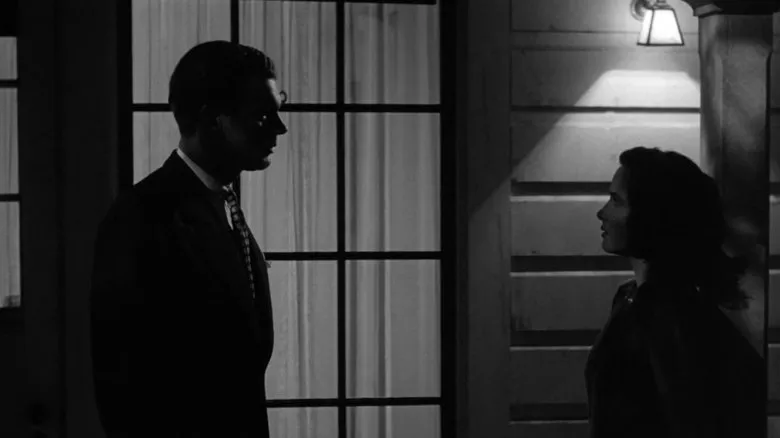Alfred Hitchcock, a true maestro of cinema, undeniably transcended the very art of filmmaking throughout his illustrious, decades-long career as a director. His unparalleled storytelling prowess, coupled with a meticulous and almost obsessive attention to detail, consistently elevated every project he touched, transforming mere narratives into unforgettable cinematic experiences. Hitchcock is widely credited with pioneering and popularizing a myriad of film genres, innovative plot devices, and groundbreaking filmmaking techniques that continue to exert a profound influence on contemporary cinema. Esteemed directors such as David Fincher, Christopher Nolan, and Martin Scorsese frequently acknowledge Hitchcock as a foundational wellspring of inspiration for their own critically acclaimed creations. His indelible imprint on the suspense and horror genres, in particular, remains profoundly evident and continues to shape the landscape of modern thrillers.
For the dedicated Hitchcock aficionado, the masterpieces like “Psycho,” “Vertigo,” “North by Northwest,” and “Rear Window” are likely familiar, cherished treasures. However, with an astonishing filmography that spans 53 feature films, it’s inevitable that some gems might be overlooked or perhaps less appreciated by the broader public. While the following list may not exclusively feature what some consider his absolute “best” work, each film is undoubtedly a worthy and compelling addition to his already monumentally impressive body of work, offering unique insights into the boundless creativity of the “Master of Suspense.”
8. To Catch a Thief (1955)
Grace Kelly, with her incandescent screen presence, graced only three of Hitchcock’s films, yet in each instance, she effortlessly commanded the screen. She embodied the quintessential Hitchcock blonde: elegant, mysterious, and utterly captivating, enchanting not just audiences and critics but even her co-stars. While her celebrated performances in “Rear Window” and “Dial M for Murder” often receive extensive praise, her most understated, and perhaps least discussed, collaboration with the master is the delightful 1955 romantic crime thriller, “To Catch a Thief.” Although this film may not have garnered the same fervent critical acclaim as Kelly’s prior cinematic ventures with Hitchcock, it remains an undeniably entertaining and engaging spectacle. Notably, while some interior scenes were meticulously crafted on sets at Paramount Studios, a significant portion of its breathtaking sequences were gloriously captured on location amidst the sun-drenched, picturesque landscapes of southeastern France, lending an authentic, luxurious backdrop to the unfolding drama.
Visually resplendent and narratively charming, “To Catch a Thief” is utterly worth watching for the undeniable, sizzling chemistry that crackles between its leads, Cary Grant and Grace Kelly. Their effortless banter and sophisticated romance form the very heart of the film. Adding her own unique brand of charm and humor to the ensemble is Jessie Royce Landis. Furthermore, the film boasts iconic costumes, meticulously designed by the legendary Edith Head, a titan in the world of Hollywood costume design. Head herself famously revealed that “To Catch a Thief” held a special place in her heart, being her favorite film she ever worked on. The sophisticated plot follows retired jewel thief John Robie (Grant), known as “The Cat,” as he finds himself compelled to clear his name after being framed for a series of audacious robberies executed with his signature style. While subtly evading the ever-suspicious local police, he crosses paths with the enigmatic and wealthy Frances (Grace Kelly) and her vivacious mother, Jessie (Royce Landis), who, intrigued by his predicament, lend him their unexpected aid. In classic Hitchcockian fashion, a sophisticated romance inevitably blossoms between Frances and Robie as they embark on a shared mission to unmask the real culprit.
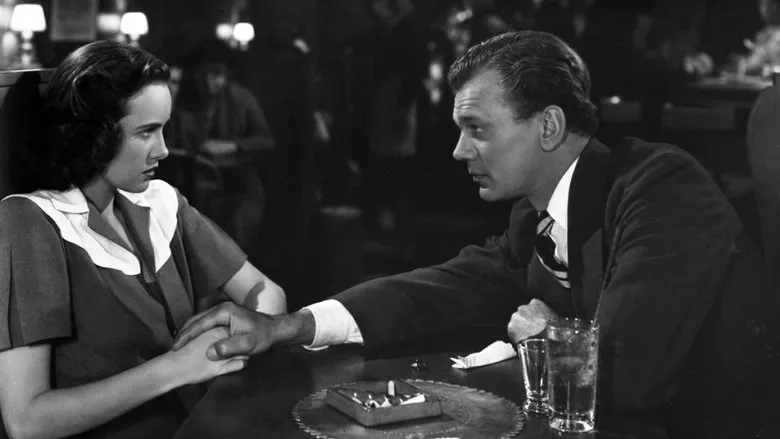
7. Spellbound (1945)
While the visually perplexing and narrative labyrinth that is “Vertigo” might arguably stand as Hitchcock’s most overtly psychologically disorienting film, the enthralling “Spellbound” presents a compelling and potent contender. Masterfully starring the iconic duo of Ingrid Bergman and Gregory Peck, the film plunges into the murky depths of the human psyche. It tells the intricate story of Dr. Petersen (Bergman), a brilliant, dedicated psychiatrist practicing her craft at a mental institution, who becomes inextricably and romantically entwined with the hospital’s charismatic new director, Dr. Edwardes (Peck). However, her burgeoning affection soon turns to chilling suspicion as she uncovers a terrifying truth: he is an imposter, and the real Dr. Edwardes has been brutally murdered. Plagued by amnesia, the man introducing himself as “Dr. Edwardes” must confront the agonizing possibility that he is either the cold-blooded killer or merely an innocent scapegoat, burdened by deeply repressed memories and overwhelming guilt. Throughout the film’s unfolding drama, Freudian themes are not merely prevalent but saturate the narrative, highlighted by Dr. Petersen’s erudite mentor, Professor Alex Brulov (Michael Chekhov), whose mannerisms and insights uncannily echo those of Sigmund Freud himself.
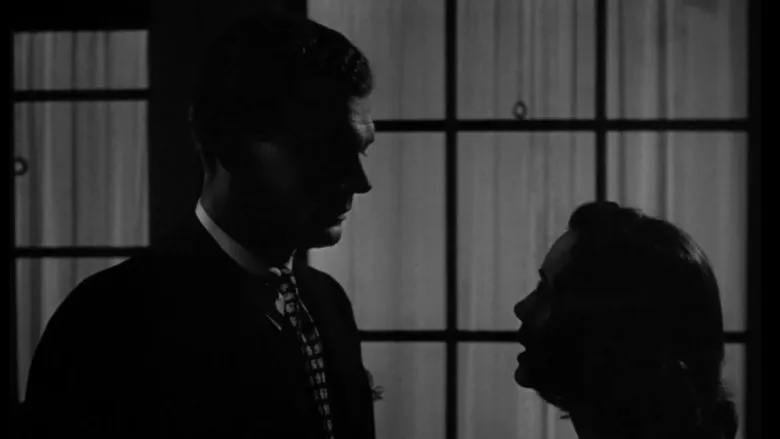
6. Shadow of a Doubt (1943)
Only two of the vast catalog of Alfred Hitchcock’s films have achieved the rare distinction of earning a perfect score on Rotten Tomatoes, a testament to their enduring critical acclaim. One is his early, intricate detective story, “Young and Innocent,” and the other is the chilling and acutely observed 1943 masterpiece, “Shadow of a Doubt.” The story unfolds around Young Charlie (Teresa Wright), a restless and imaginative girl yearning for excitement and a broader perspective beyond the confines of her small, ordinary town. She holds a deep-seated belief that her worldly Uncle Charlie (Joseph Cotten), who works out of town, is the key to broadening her horizons. As if by a telepathic summons, Uncle Charlie unexpectedly reappears in the very small town he departed years ago, bringing an initial surge of joy and excitement to the family, with the sole exception of Young Charlie’s book-loving younger sister, who remains curiously indifferent. However, after the initial familial delight, an unsettling series of strange occurrences begins to unfold. Young Charlie soon discovers unfamiliar initials subtly engraved on a ring her charming uncle gifted her, and an unexpected interview by two men claiming to be journalists visibly perturbs and discomposes her ordinarily composed uncle. Adding to the unsettling atmosphere, her father’s morning newspaper consistently appears mischievously folded into intricate playtime toys by her uncle, seemingly innocuous but serving as another subtle hint. The sensitive and observant Young Charlie cannot disregard these mounting inconsistencies and resolves to seek answers, embarking on a determined quest to locate the day’s elusive newspaper at the local library.
“Shadow of a Doubt” is also celebrated as an early, profound manifestation of Hitchcock’s deep-seated fascination with the unsettling concept of doubles, or doppelgangers. As poignantly implied by the shared names of Young Charlie and Uncle Charlie, they are symbolically each other’s uncanny reflections – but with a stark and chilling contrast. Young Charlie embodies all that is inherently good, innocent, and pure, while Uncle Charlie slowly reveals himself to represent an insidious darkness, a pure embodiment of evil and corruption. Beyond this central pairing, the thematic motif of “twos” continually surfaces, inextricably linked to the pervasive double theme that underpins the narrative: there are, notably, two astute detectives assigned to the case, and two distinct murder suspects meticulously under investigation. Additionally, Young Charlie herself has two younger siblings, two close and supportive friends, and two different suitors vying for her affection, each reinforcing the idea of duality within the seemingly idyllic setting.
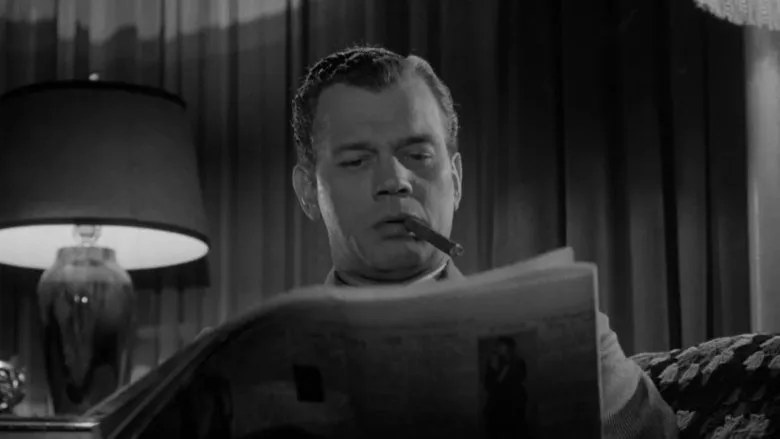
5. The Man Who Knew Too Much (1934)
While Alfred Hitchcock’s technicolor 1956 remake of “The Man Who Knew Too Much” is undoubtedly more widely known and frequently screened than his original 1934 black-and-white film, the latter possesses a critical, magnetic element that its successor fundamentally lacks: the incomparable Peter Lorre. With his distinctive, unnervingly expressive appearance and his commanding, sinister presence, Lorre single-handedly elevates the original film as the chillingly memorable villainous Abbot. While the 1956 version does boast stunning Technicolor cinematography, skillfully incorporates various archetypal Hitchcockian thriller themes, and enlists the beloved talents of screen legends such as James Stewart and Doris Day, the earlier, leaner original masterfully builds a raw, escalating tension and features a more sophisticated, intricately plotted villainous conspiracy. Intriguingly, Hitchcock himself, reflecting on his two adaptations, candidly admitted that while his later version was undoubtedly more polished and grander in scale, he privately preferred his earlier, more “amateur” version for its raw, unfiltered creative energy and its authentically chaotic, suspenseful climax.
“The Man Who Knew Too Much” tells the harrowing story of the British harmonious family, Bob (Leslie Banks), Jill (Edna Best), and their young daughter Betty (Nova Pilbeam), who embark on a seemingly idyllic vacation to picturesque Switzerland. However, destiny, or perhaps sheer misfortune, intervenes as they inadvertently become inextricably entangled in a dangerous, far-reaching criminal plot, simply by being in the wrong place at the wrong time. A sinister and ruthlessly efficient group, ostensibly led by the terrifying Abbot (Lorre), orchestrates the immediate kidnapping of young Betty. Their chilling purpose is to brutally blackmail Bob and Jill into remaining silent and uncooperative while a political assassination unfolds. Yet, the determined and resourceful couple, fueled by an unbreakable familial bond, are absolutely resolved to retrieve their beloved daughter, stubbornly refusing to surrender without a desperate and courageous fight against overwhelming odds.
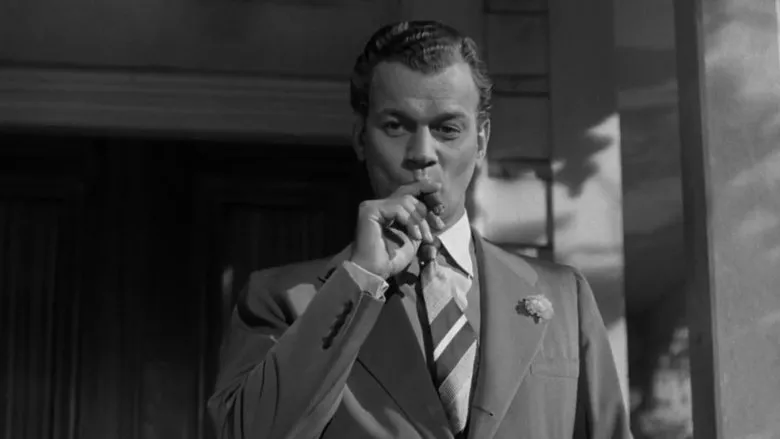
4. The Wrong Man (1956)
“The Wrong Man” arguably stands as Alfred Hitchcock’s most profoundly serious, yet extraordinarily intimate and personal, film within his extensive oeuvre. This compelling film noir docudrama unfurls as a stark, gritty portrayal of a true story, meticulously chronicling the harrowing ordeal of Manny Balestrero, a humble Queens musician who, in 1953, found himself wrongly accused and devastatingly implicated in a series of robberies targeting an insurance company. The film meticulously follows Balestrero’s increasingly desperate and agonizing struggle to prove his innocence, a pursuit that, tragically, extracts an agonizing psychological and emotional toll in the long run. Indeed, the real-life story of Manny Balestrero was so heartbreakingly bleak and deeply unsettling that Hitchcock, in a rare deviation from his usual narrative impulses, subtly altered the film’s ending to infuse it with a faint glimmer of hope, rendering it marginally less despairing than its real-world counterpart.
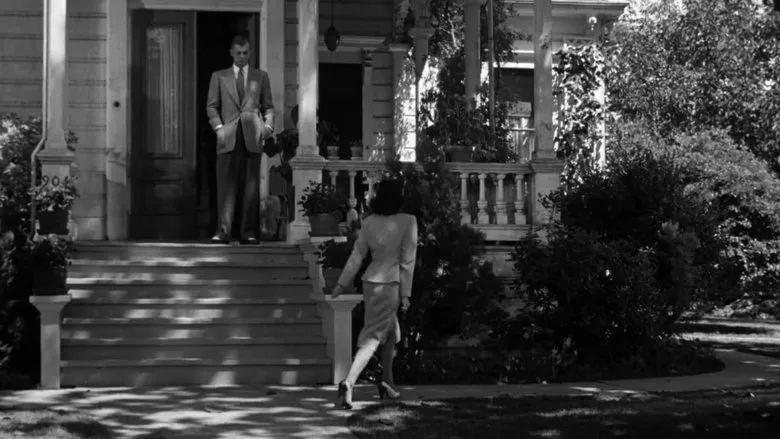
3. The Lady Vanishes (1938)
While “The Lady Vanishes” might not be as frequently discussed or spotlighted as some of Alfred Hitchcock’s more globally renowned and commercially potent later works, it nonetheless stands as an exceptional early blueprint of his burgeoning creative genius and his distinctive, a delectable, tongue-in-cheek humor. A keen eye will immediately recognize numerous narrative and stylistic elements within this thrilling spy caper that powerfully foreshadow his quintessential Hollywood masterpiece, “North by Northwest.” These include the delightful development of a budding romance between two initially sparring protagonists, a cunning plot meticulously orchestrated around a pivotal MacGuffin (an object whose true significance is secondary to its narrative propulsion), and shrewdly conceived scenes that masterfully utilize a train as a dynamic and claustrophobic primary plot device, enhancing suspense and trapping characters in shared predicament. Upon its initial release, the film garnered immediate and widespread popularity with American audiences, a significant factor that undeniably paved the way for Hitchcock’s momentous relocation to Hollywood the very next year, signalling his arrival on the international stage.
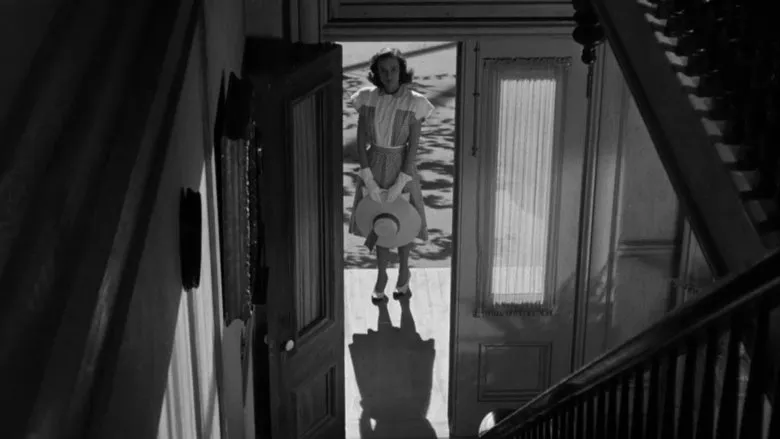
2. Rope (1948)
“Rope” is frequently, and for very compelling reasons, considered Alfred Hitchcock’s most overtly “gay” film. The narrative is richly imbued with so many subtly implied, yet undeniably present, sexual undertones between the intellectually arrogant Brandon (John Dall) and the emotionally fragile Phillip (Farley Granger) that the sheer volume of these coded references has even spurred the creation of dedicated YouTube videos compiling every nuanced suggestion throughout the film. In a fascinating instance of life imitating art, actor John Dall’s own sexuality was the subject of much speculation and quiet questioning throughout his career until his passing, while Farley Granger was openly bisexual, further embedding this subtext in the film’s production. Hitchcock, with his characteristic subtlety and mischievous wit, implies this theme in various compelling ways throughout “Rope”: Brandon and Phillip not only share the same apartment, but their dynamic is clearly established, with Brandon as the assertive, dominant, and confident mastermind, and Phillip as the meek, submissive, and anxiety-ridden accomplice. Furthermore, the supporting characters frequently employ veiled innuendos and coded language that hint at the true nature of the protagonists’ relationship and their sinister pact. It is also crucial to note that their chilling crime deliberately alludes to the infamous real-life murder duo, Leopold and Loeb, who were indeed lovers, providing a direct, historical parallel that reinforces the film’s implicit themes.
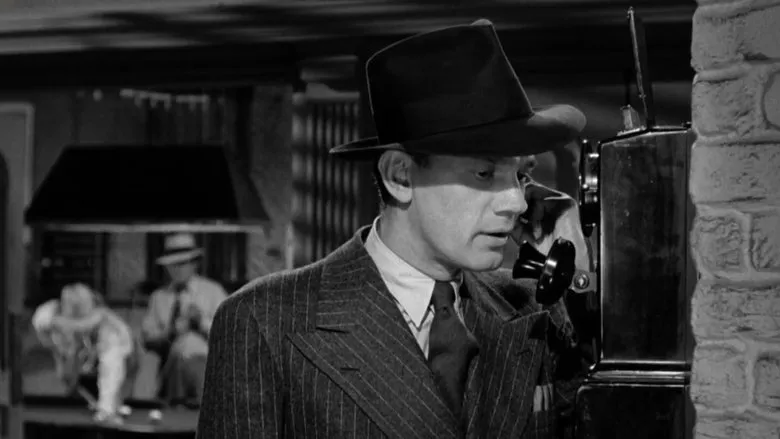
1. Stage Fright (1950)
“Stage Fright” often resides in the shadow of Alfred Hitchcock’s more celebrated works, considered a less frequently discussed entry in his venerable filmography. This perception is, frankly, surprising, given the raw power of its performances and the intricate layers of its beautifully constructed plot. Marlene Dietrich, embodying a captivating mystique, and Jane Wyman, with her compelling vulnerability, both deliver luminous, parallel roles that highlight the film’s central struggle between appearance and reality. The story itself intentionally blurs the precarious lines between objective truth and subjective performance, a recurring motif in Hitchcock’s exploration of deception. This nuanced film noir thriller ingeniously deploys several of Hitchcock’s most beloved tropes: an unreliable narrator whose perspective we question, a heightened theatrical setting that emphasizes role-playing, pervasive themes of deception and hidden identities, and of course, the archetypal Hitchcock blonde – but with a cunning, femme fatale twist that subverts expectations. While “Stage Fright” may not boast the same ambitious scale or groundbreaking experimental quality as some of his later blockbusters from the prolific 1950s, it remains an endlessly engaging, profoundly mysterious, and ingeniously crafted piece of cinema. It masterfully utilizes high-contrast lighting and stark shadows, which not only enhance the classic film noir mood but also brilliantly amplify the pervading sense of tension and unease.
